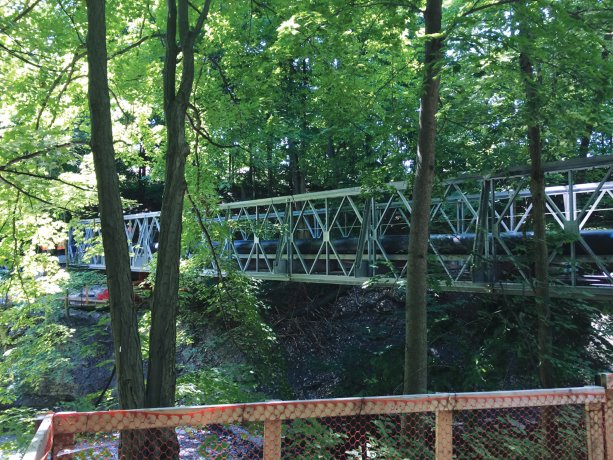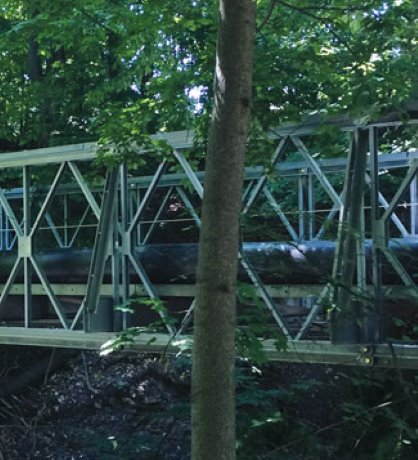For Capital Sewer Services Inc., unnecessary harm to the environment is not an option. The Hamilton-based company is currently undertaking the Chapman Sanitary Trunk Sewer Rehabilitation project for the City of Toronto.
Located in the Chapman Valley Park ravine along Humber Creek, the deteriorating line runs through environmentally sensitive land, city easements on private property, nature trails and under the creek itself.
"Our goal is to plan everything with precision, be a good neighbour while we’re there and ensure that the project space looks as much as possible like it did before we arrived," says Steven Fabbro, senior project manager with Capital Sewer.
The project involves cured-in-place pipe (CIPP) lining of the sewer, which ranges from about 30 to 33 inches in diameter. The line has experienced infiltration caused by deterioration through exposure to hydrogen sulfide gas and calcite build-up along joints. The contract also includes epoxy rehabilitation of 21 manholes along the sewer line, requiring several to be raised higher above the floodplain.
The entire project is being completed under the direction of the Toronto and Region Conservation Authority.
"Before we did any work, our subcontractor dBA Environmental Services performed a precondition survey," says Fabbro. "That included taking pictures of the entire natural area, exterior photos of the houses — even interior photos of the houses where the homeowner allowed. Using comparison photos, we were committed to leaving everything in the same condition or better."
Performing CIPP requires access to the manholes and that meant building an access road to the sewer along the ravine.
"We went in through one of the easements and laid down 400 millimetres of granular B crusher run, compacted to reduce the impact of trucks," says Fabbro. "That road will be removed following construction."
The project also required the construction of a permanent stabilized access slope on one end of the project over a 10-metre change in elevation. The engineered slope walls will be naturalized by vegetation following the rehabilitation.
The bypass plan involves installing three high-density, 18-inch polyethylene pipes along the sewer line.
"The system is built for redundancy," says Fabbro. "Two will be used at any time and a third will be available for use at a moment’s notice in case there’s a blockage in either of the other two. We’ll be using four 12-inch silent pumps, with three in use at any time and a fourth pump available strictly as a backup."
The bypass will follow the path of the original sewer, including two creek crossings. While one crossing will require the placement of steel beams to support bypass lines across the creek, the other was more complex.
"We assembled a modular Bailey bridge supplied by Algonquin Bridge," says Fabbro. "The bridge is about 120 feet long from bank to bank. There’s very limited space with the access path ranging from about 4.5 to five metres wide. The bridge was delivered to the site in multiple pieces and pushed across the creek in stages. We needed to apply 44 tonnes of counterweight when we had 110 feet of the bridge suspended over the river."
Interconnected tree protection zones also limit the delineated working space for trucks, and for the project team, which numbers about 10 workers at its peak. The project is estimated at about 240 working days and is set to conclude by the beginning of November.
Following the work, new trees will be planted, in excess of any trees that were removed to accommodate work. Subcontractor Northgate Farms, which assisted with bridge installation, will also be responsible for environmental restoration.
"Most of the people we’re encountering are receptive to the project and know why it’s so important," says Fabbro. "The others come around when we educate them on what we’re doing."

Capital Sewer Services Inc. is currently working on the Chapman Sanitary Trunk Sewer Rehabilitation project for the City of Toronto. Located in the Chapman Valley Park ravine along Humber Creek, the deteriorating line runs through environmentally sensitive land, city easements on private property, nature trails and under the creek itself. The project requires two creek crossings, which involved building a bridge in one section.
Photo: Capital Sewer Services"










Recent Comments
comments for this post are closed